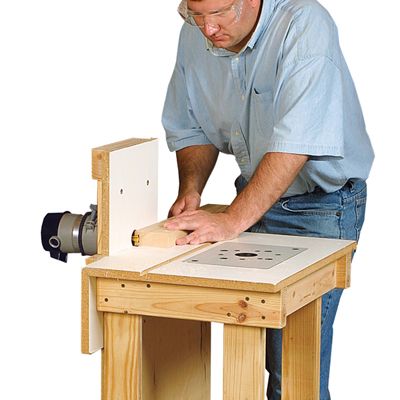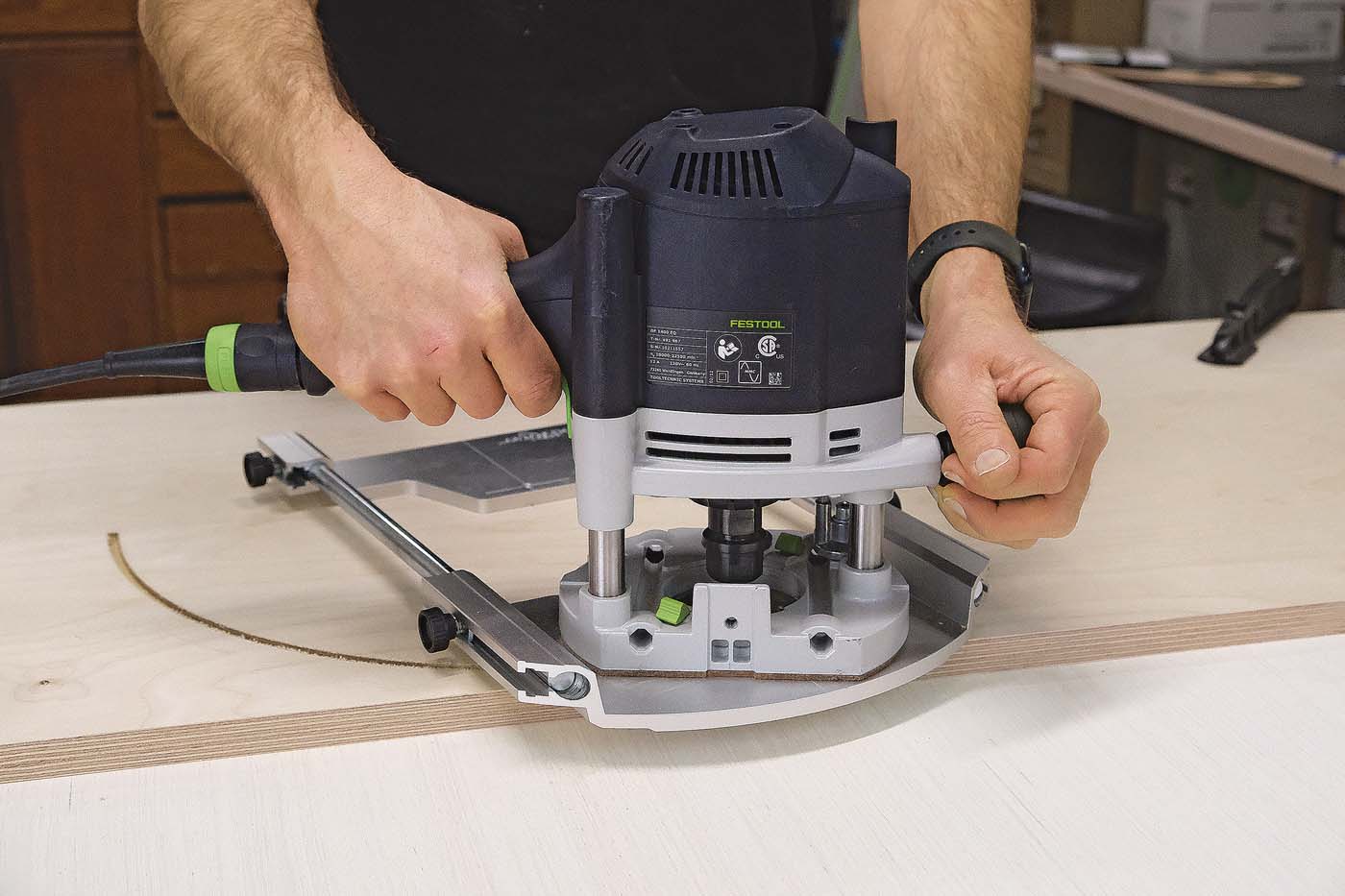A Versatile Router Table
This economical design is capable of conventional, overhead, or horizontal routing
Synopsis: Having trouble finding a router table that meets all your needs? The author, a mechanical designer and machinist, sought one that mounts the router horizontally and uses an overhead pin routing guide, among other features, so he built one himself. Its a no-frills, inexpensive option that handles any cut he can think of making. The article also discusses useful accessories, including a vacuum-hose attachment.
From Fine Woodworking #169
Over the years I looked at a lot of router-table designs, but every one I came across lacked one feature or another. Shopmade router tables usually are limited to tabletop routing and fall short if you want to do anything more, like mount the router horizontally or use an overhead pin routing guide. The same is true for most store-bought tables.
My own router-table design combines all of the features I was after. The table I arrived at is easy to build, and it can be made with low-cost materials. Above all, because it accommodates the router in a variety of orientations, it can handle any cut that I could possibly think of making.
With the router mounted horizontally in an adjustable carriage, the table is set up ideally for cutting sliding dovetails or mortise-and-tenons. And shaping the edge of a wide board doesn’t require balancing unwieldy material on end.
The adjustable carriage also doubles as a base to mount several overhead attachments. A pin routing guide makes the table useful for template-routing. A fence guard is easy to set up for safety. Finally, a horizontal carriage attachment allows the router to be mounted upright above the table surface and the workpiece. In this orientation, you can reference the flat side of the workpiece on the tabletop, which is helpful when removing wide areas of material or when cutting irregular moldings. With such a simple system for mounting attachments, I can build new ones to tackle any tasks I think of down the road.
The adjustable carriage moves in a true vertical line perpendicular to the tabletop, so overhead attachments can rest on top and be moved up and down while remaining parallel to the tabletop, a design that’s critical to using the overhead attachments effectively. This construction method differs from most horizontal router tables on which the router height is adjusted on a single pivot point, and the router moves up and down in an arc when it’s raised and lowered.
The construction of the router table is relatively simple. The stand is made of 2x4s held together with drywall screws. This is a sturdy and inexpensive method that can be modified easily if you want to add drawers or make an enclosed cabinet.
For the full article, download the PDF below.
Fine Woodworking Recommended Products

Tite-Mark Marking Gauge

Double Sided Tape

Woodriver Circle Cutting Jig






















Log in or create an account to post a comment.
Sign up Log in